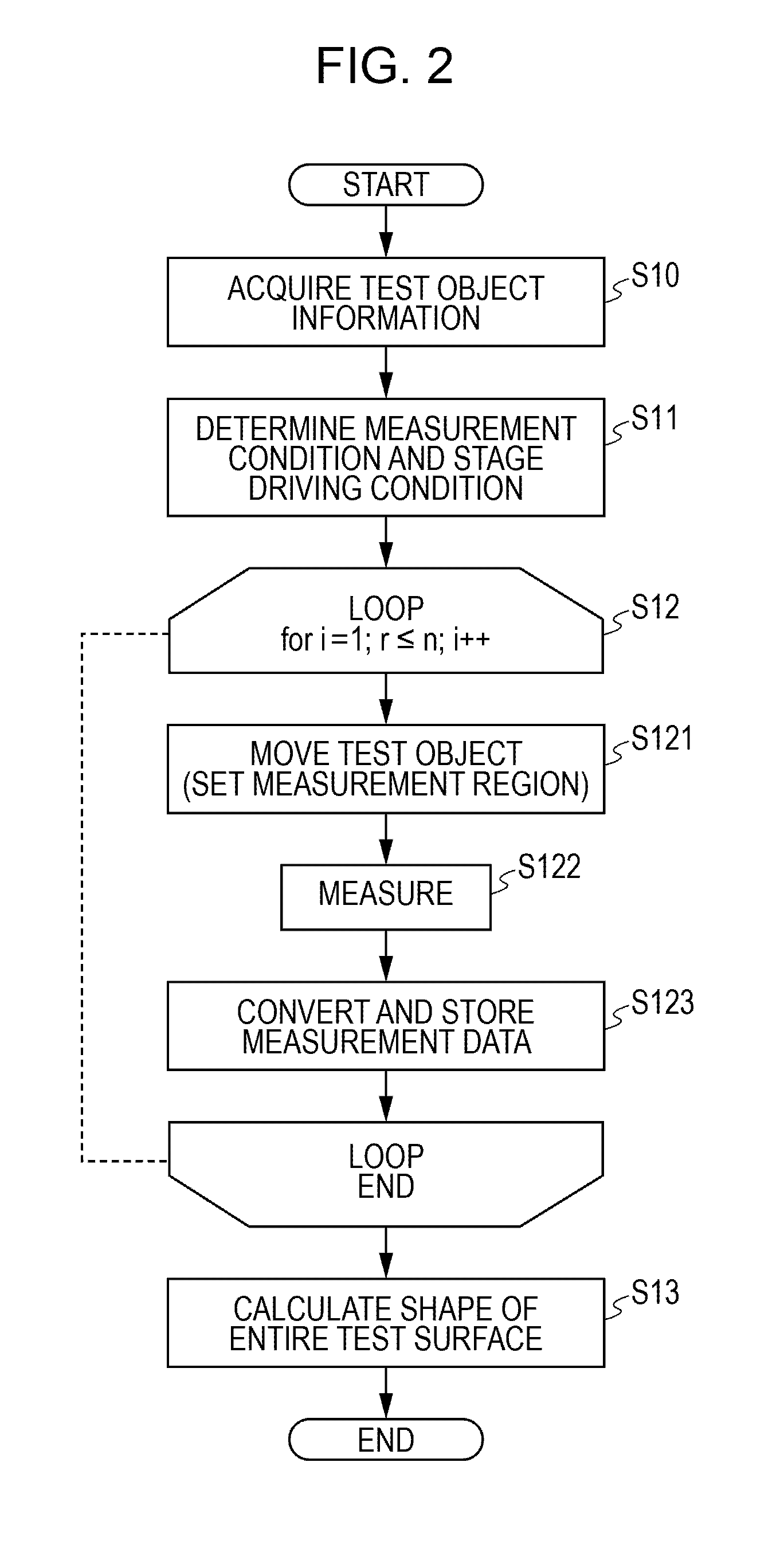Measurement method for measuring shape of test surface, measurement apparatus, and method for manufacturing optical element
- Summary
- Abstract
- Description
- Claims
- Application Information
AI Technical Summary
Benefits of technology
Problems solved by technology
Method used
Image
Examples
embodiments
[0033]FIG. 1 illustrates a measurement apparatus that measures the shape of a test surface. The measurement apparatus includes an interferometer 1, a stage 3 that supports a test object 2, and a control unit 10 that controls the interferometer 1 and the stage 3. An interferometer is an apparatus (measurement unit) that causes the reference wavefront and the test wavefront to interfere with each other and that measures interference fringes. The interferometer 1 illustrated in FIG. 1 is a Fizeau interferometer. The test object 2 is supported by the stage 3, and is made to move in the x, y, and z directions or to rotate about the x, y, and z axes.
[0034]The interferometer 1 mainly includes a laser (light source) 4, a lens 5, a sensor 6, a TS lens 7, and a beam splitter 8. Light emitted from the laser 4 is collimated by a lens, and enters the TS lens 7 through the beam splitter 8. The TS lens 7 splits the light from the laser 4 into reflected light and transmitted light on a surface TS (...
embodiment 2
[0082]In this embodiment, resolutions are changed by setting pixels used for photographing performed by an image pickup element.
[0083]Measurement ranges on a test surface will be described with reference to FIG. 12. The thick line illustrated in FIG. 12 represents the outer periphery of the test surface, and dotted line circles C1 to C7 represent respective measurement ranges. In this example, the test surface is divided into seven measurement ranges and is measured. Each of C1 to C7 partially overlaps at least another measurement range, and an overlap region is formed. The regions (areas or diameters) of C1 to C7 are the same.
[0084]In FIG. 12, the test object is an aspherical shaped lens with rotational symmetry, and it is assumed that the region C1 (central portion) has a different amount of asphericity from the regions C2 to C7 (peripheral portions) while all the regions C2 to C7 have an equal amount of asphericity. Thus, the center portion, i.e., C1 (first measurement range), an...
embodiment 3
[0092]In this embodiment, binning conditions under which a CCD reads signals of pixels are changed. Binning is a function for combining several adjacent pixels on a CCD into a group to virtually increase the area of a light receiving surface so that the electrical signals can be amplified and detected. Binning allows the same effect as when the number of pixels is reduced to be obtained. Binning is generally represented as, for example, 1×1, 2×2, 3×3, . . . Binning 1×1 means that each pixel is used as it is. Binning 2×2 means that a pixel region of 2 pixels×2 pixels=4 pixels is integrated into one large pixel. Here, since the pixel size is increased to be four times the original, the sensitivity to light also becomes four times the original but the resolution becomes half the original. Therefore, if a 2048×2048 CCD is used, 2×2 binning provides 1024×1024 pixel resolution, resulting in low-resolution measurement.
[0093]According to this embodiment, high-resolution measurement is perfo...
PUM
 Login to View More
Login to View More Abstract
Description
Claims
Application Information
 Login to View More
Login to View More - R&D
- Intellectual Property
- Life Sciences
- Materials
- Tech Scout
- Unparalleled Data Quality
- Higher Quality Content
- 60% Fewer Hallucinations
Browse by: Latest US Patents, China's latest patents, Technical Efficacy Thesaurus, Application Domain, Technology Topic, Popular Technical Reports.
© 2025 PatSnap. All rights reserved.Legal|Privacy policy|Modern Slavery Act Transparency Statement|Sitemap|About US| Contact US: help@patsnap.com



